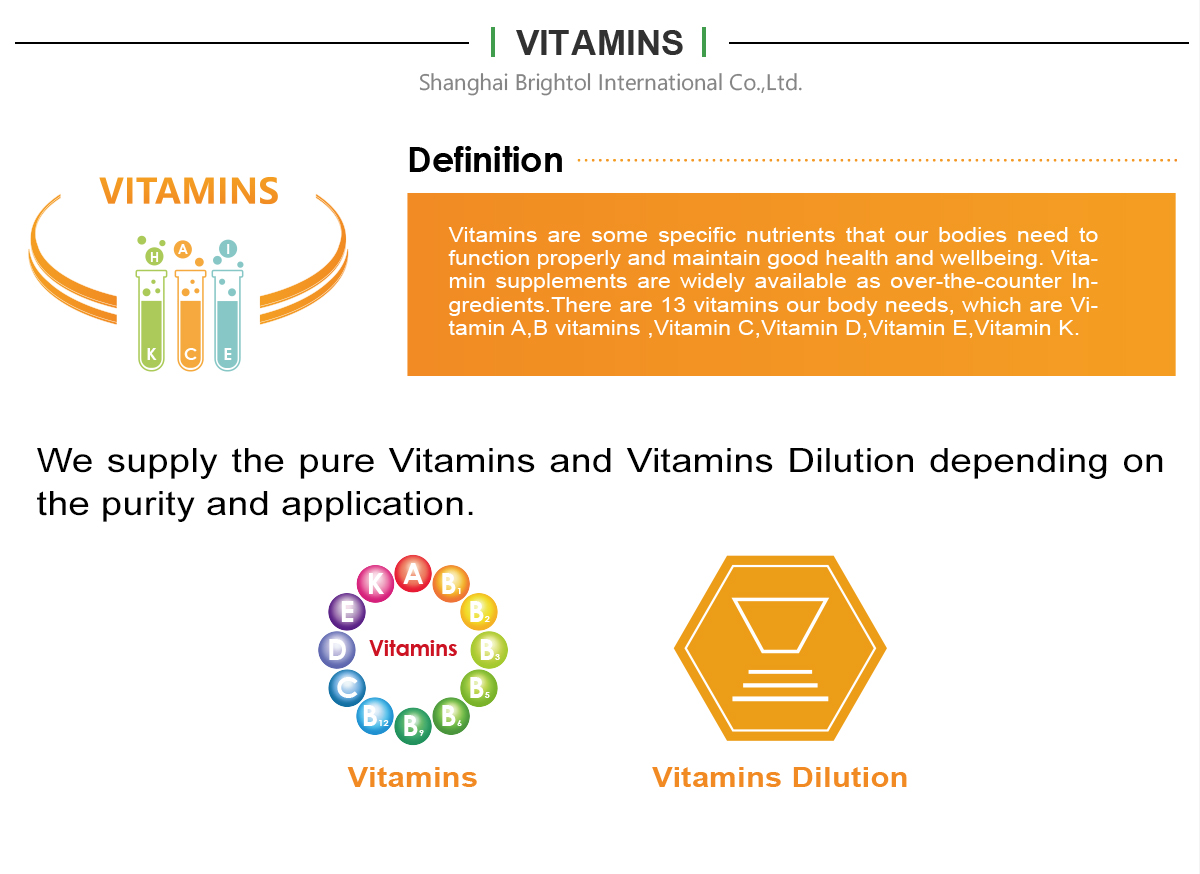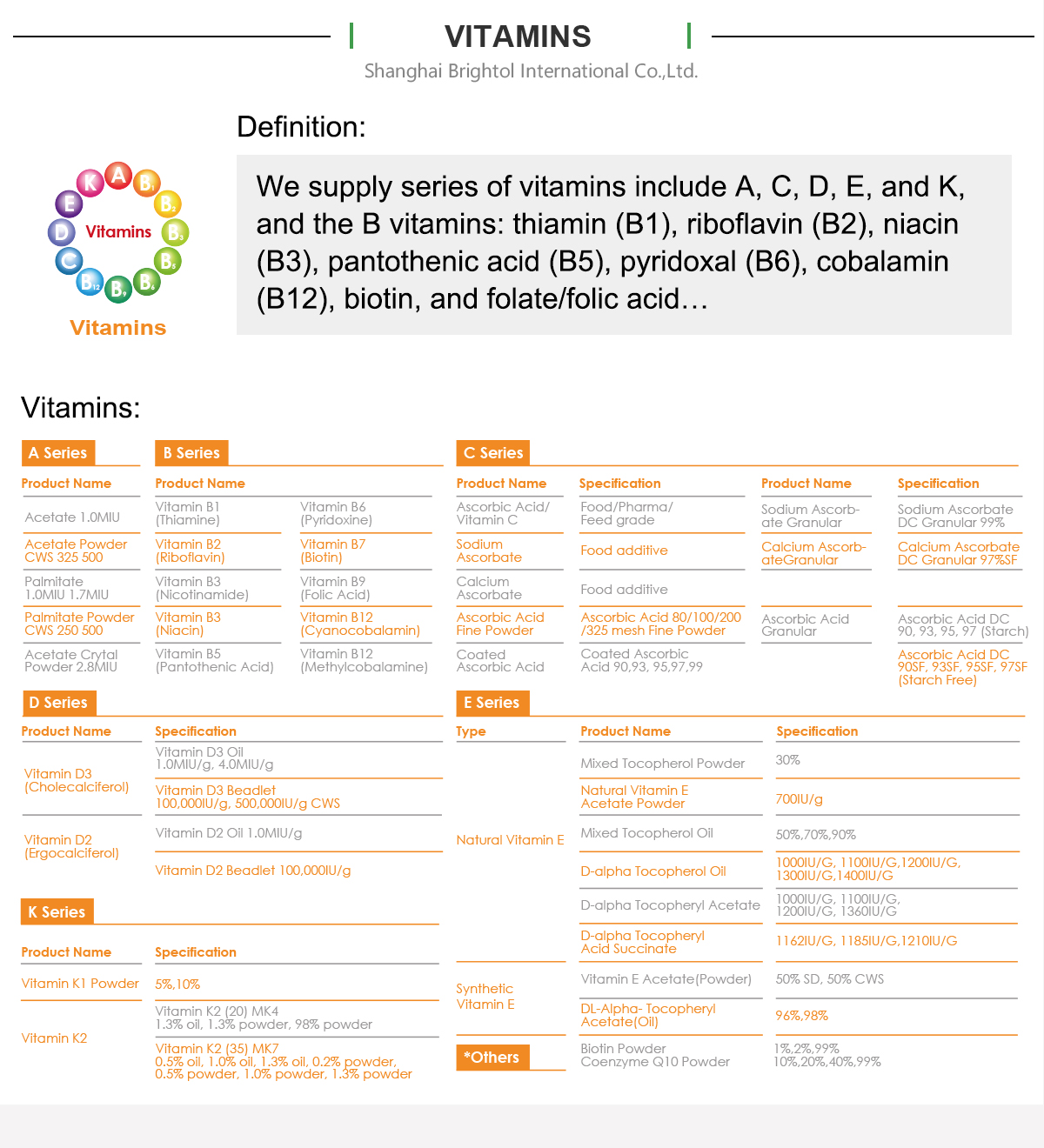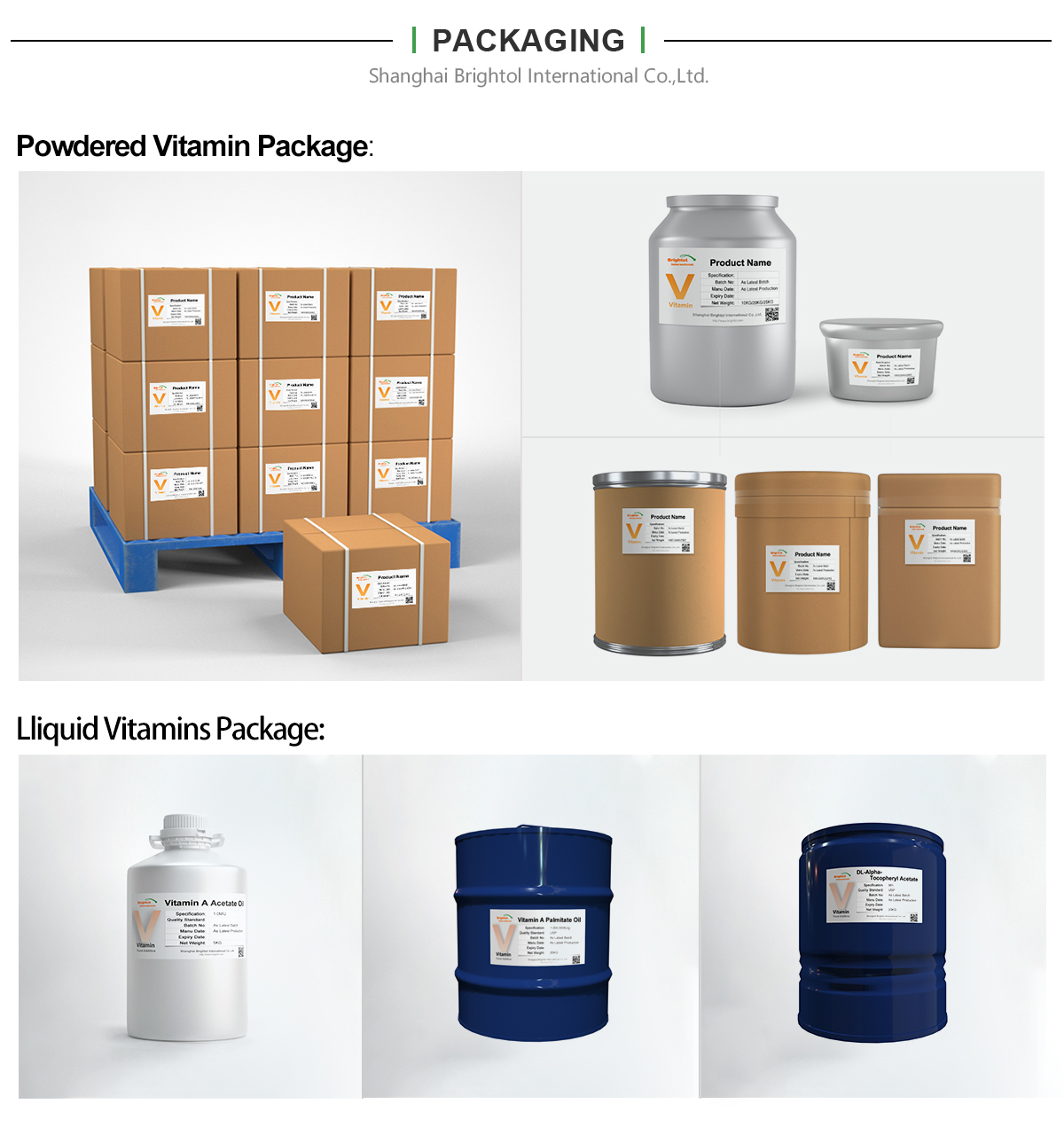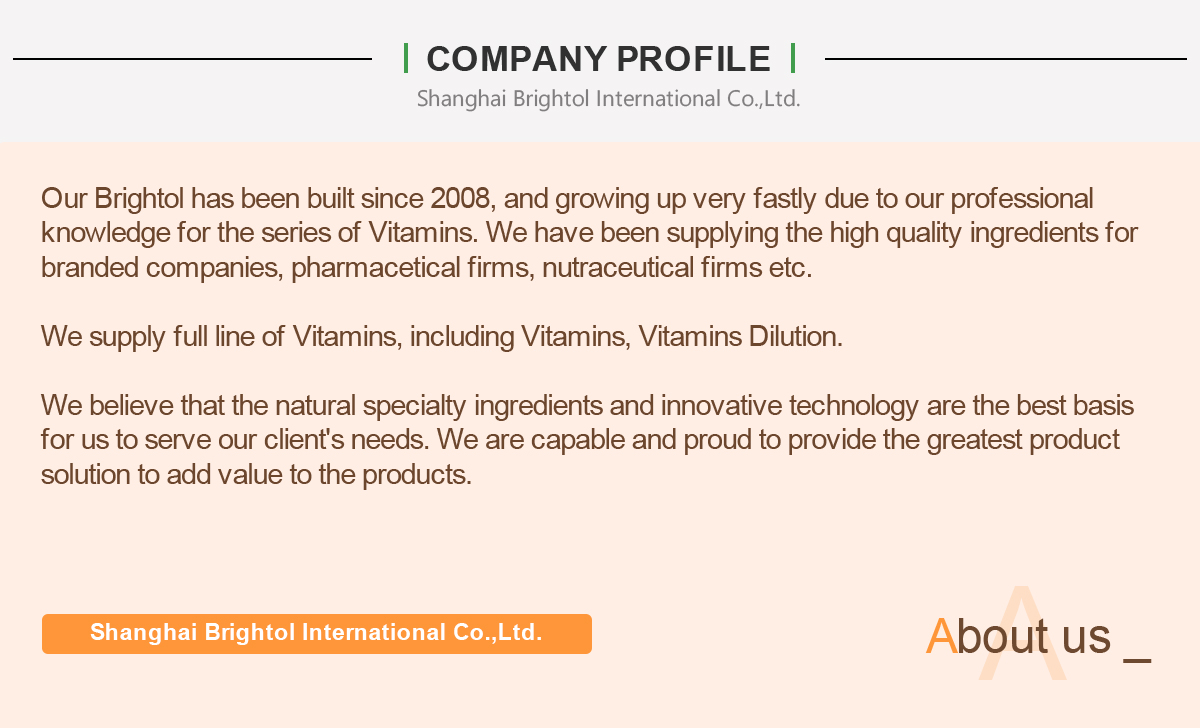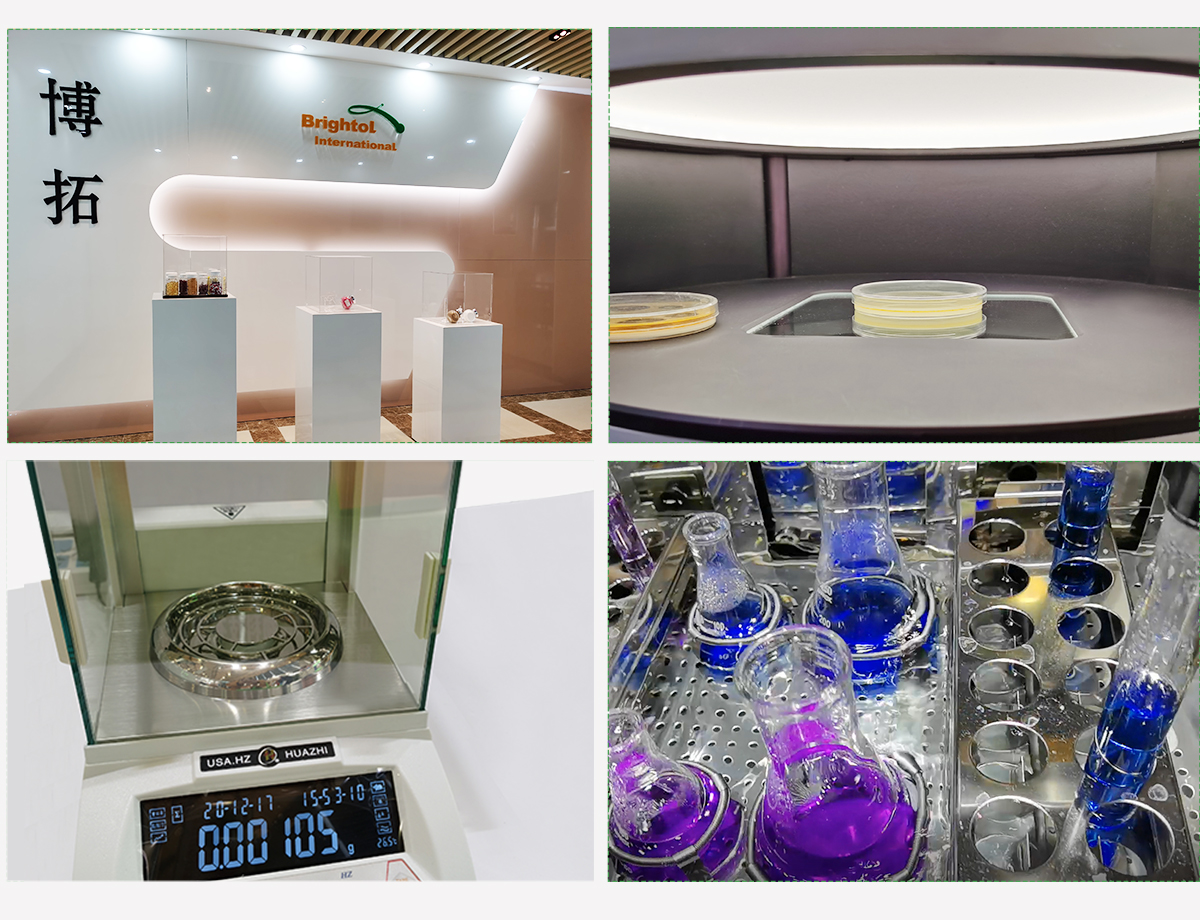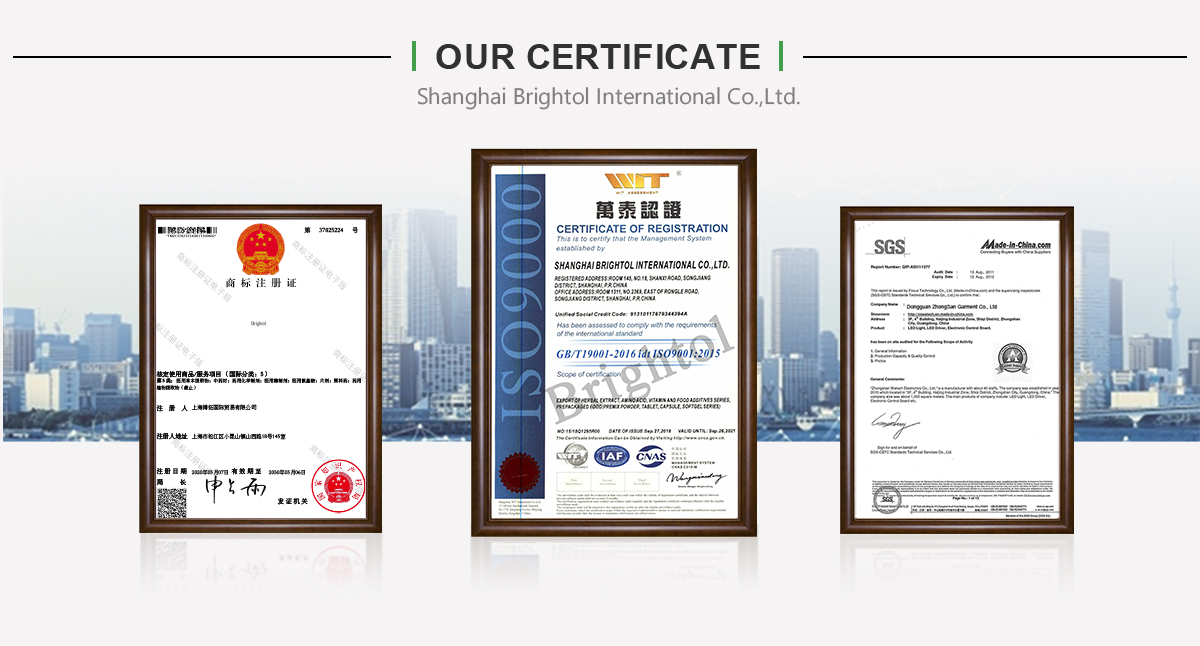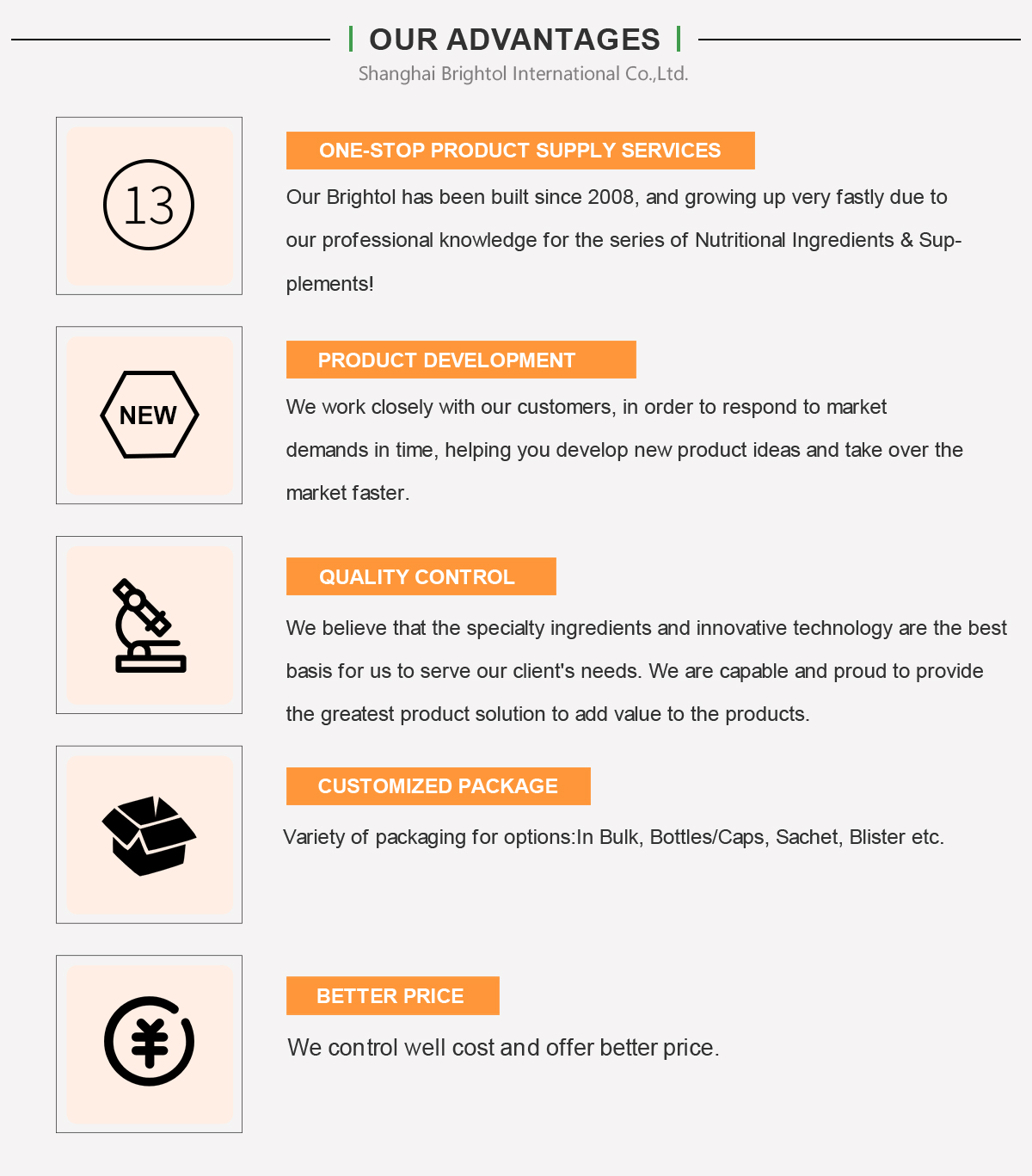

Introduction:
Using vitamin D3 as raw material, using gum arabic, sucrose, sodium starch octenyl succinate, maltodextrin etc. as carriers, it is produced through double-layer embedding technology. The product is white and fluid powder. Because it can be quickly and completely dispersed in cold water systems, it can be used in milk and other liquid systems, and can remain stable for a long time. High temperature and oxidation resistance under neutral and alkaline conditions, and acidic conditions Gradually decompose and destroy.
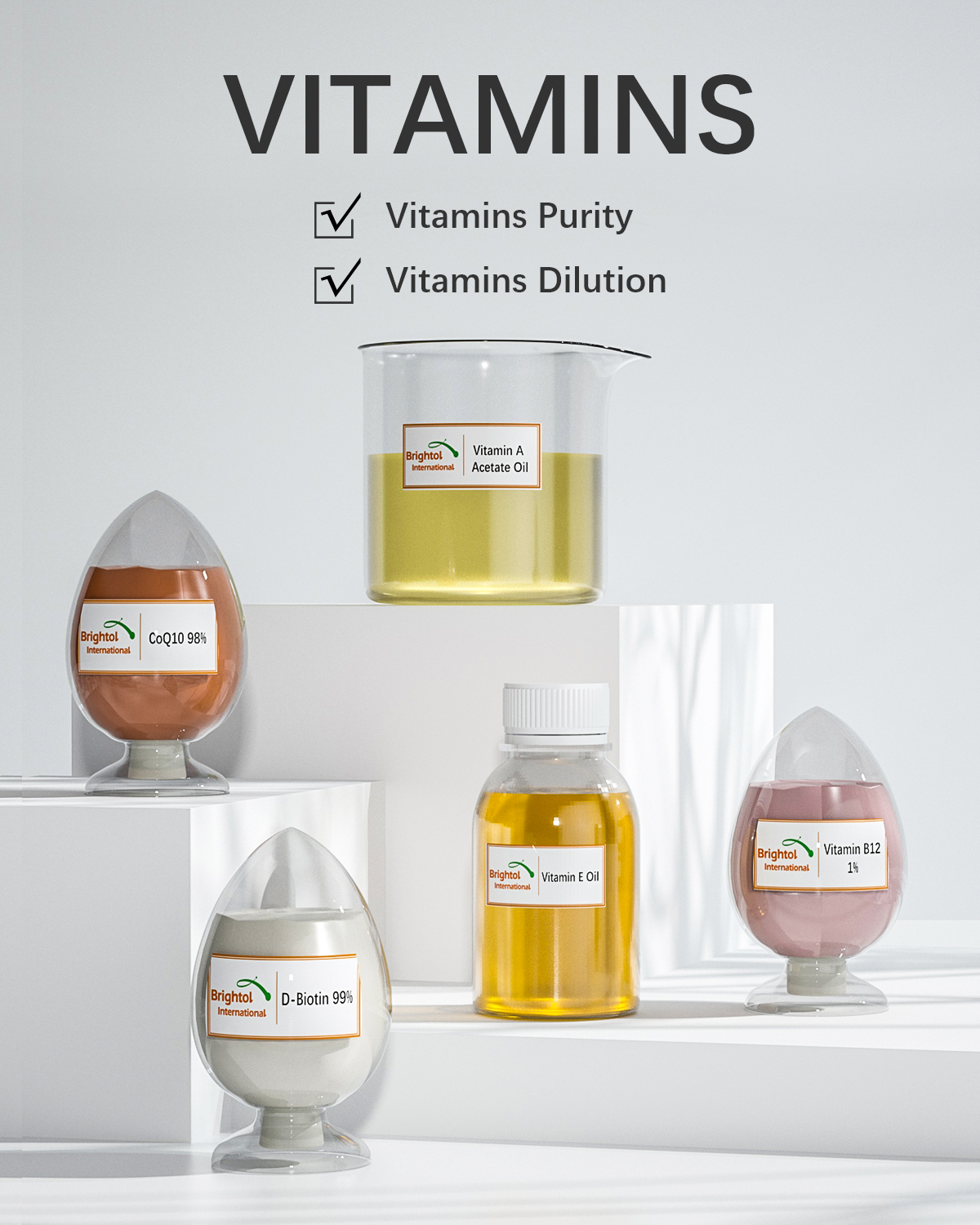

Vitamin D3 Powder
Identification
|
Name |
Vitamin D3 |
|
Synonyms |
Cholecalciferol |
|
Molecular Formula |
C27H44O |
|
Molecular Weight |
384.64 |
|
CAS NO. |
67-97-0 (8050-67-7;8024-19-9) |
|
Melting point |
82-87 ºC |
Introduction:
Using vitamin D3 as raw material, using gum arabic, sucrose, sodium starch octenyl succinate, maltodextrin etc. as carriers, it is produced through double-layer embedding technology. The product is white and fluid powder. Because it can be quickly and completely dispersed in cold water systems, it can be used in milk and other liquid systems, and can remain stable for a long time. High temperature and oxidation resistance under neutral and alkaline conditions, and acidic conditions Gradually decompose and destroy.
The microcapsule embedded powder is a small round particle composed of a core material composed of vitamin D3 and a wall material composed of gelatin-sucrose. The microencapsulated powder is also made by spray drying. A thin layer of starch is placed on the outer layer of the granules, so that the powder made can withstand high pressure and is suitable for making tablets and can also be used as hard capsule products.
Specification: 100,000IU/500,000IU CWS
|
Items |
Specification |
|
Appearance |
Pale yellow or white flowing granule |
|
Particle Size |
All pass through the sieve of 40mesh |
|
Loss on Drying |
≤5.0% |
|
Sulfated Ash |
<1.0% |
|
Lead |
<2ppm |
|
Arsenic |
<2ppm |
|
Assay |
≥100,000IU/g/≥500,000IU/g |
|
Total bacterial count |
≤1000cfu/g |
|
Coli form bacteria |
<30MPN/100g |
|
Fungi and yeast |
≤100cfu/g |
|
Salmonella: |
Negative |
|
Staphylococcus Aureus |
Negative |
|
Shigella |
Negative |
Function:
1. Improve the body's absorption of calcium and phosphorus, so that the plasma calcium and plasma phosphorus levels reach saturation.
2. Promote growth and bone calcification, promote healthy teeth.
3. Increase the absorption of phosphorus through the intestinal wall and increase the reabsorption of phosphorus through the renal tubules.
4. Maintain the normal level of citrate in the blood.
5. Prevent the loss of amino acids through the kidneys.
